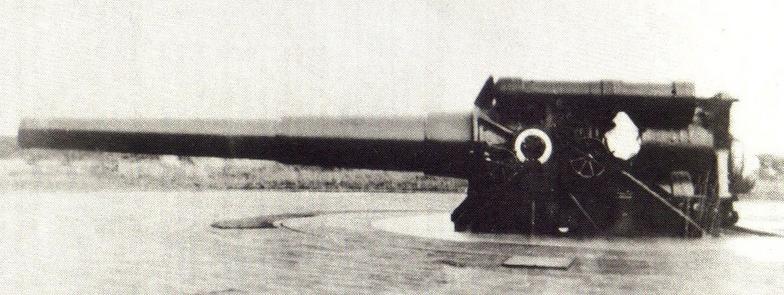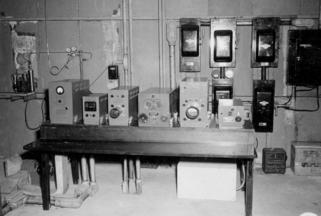Fort Saulsbury, DE
Delaware's Forgotten Fort
This page will feature some of the other defensive measures used to assist in attempts to protect the Delaware Bay and River from enemy vessels penetrating the area.
Civil Air Patrol
The Civil Air Patrol was formed on December 1, 1941 just six days prior the attack on Pearl Harbor. Early in 1942, German submarines were sinking merchant and passenger ships along the eastern seaboard of the United States at an alarming rate. By March, the U-boats were threatening the entrance to the Delaware Bay. Within five months, 52 ships bad been sunk in US waters. It was decided to set up three CAP coastal patrol bases and the sites chosen were Atlantic City, NJ as base #1, Rehoboth, DE as base # 2 and Lantana, FL as base # 3. A primary mission of the CAP was to fly air cover for ships and warn them of any prowling German U-boats, hence the nickname of "Subchasers."
On February 28, 1942, Coastal Patrol Base # 2 was activated with only limited personnel at the Rehoboth Airport. Within a month and a half, the base had increased its personnel to 35 pilots with about 8-10 airplanes. The very first Civil Air Patrol mission was flown out of Base # 2 at Rehoboth, DE on March 5, 1942, less than a week after being activated.
Pearl Harbor, December 7, 1941
Reboboth Airfield, 1941
Rehoboth Airport, 1968 (closed 1987)
The most popular plane used at Rehoboth was the Fairchild 24 or military designation UC-61J. The plane pictured above is one of the actual planes flown from Coastal Base # 2 and was owned by CAP 1LT. M.M. Wilder. Lt. Wilder was awarded the Air Medal for his service at Coastal Base 2. The aircraft was repainted with its original markings as it was while being used by the CAP. Notice the Delaware Blue Hen insignia on the side of the plane just in front of the cockpit area. It is now housed at the Wright Patterson Air Force Base, Ohio.
Below is a closeup of the Coastal Base #2 logo or patch. It shows our famous Blue Hen in hot persuit of a German U-boat. To the right is an artist's rendition of a CAP "Subchaser" closing in on the target. The recruiting poster expresses the partnership with the Air Force, with CAP becoming an Air Force Auxiliary in 1947.
1st Lt. Henry E. Phipps shown wearing a rubberized suit in case he went down on a winter coastal flight. Lt. Phipps joined the CAP on the day it was formed and was based at Rehoboth Coastal Base 2. He flew coastal patrol for 10 months logging more than 500 hours, before the base closed on Sept. 1, 1943.
Henry Phipps became a lifelong spokesman for the Civil Air Patrol anti-subchaser patrols. Phipps was the featured anti-sub veteran in a History Channel's segment on CAP anti-subchasers that aired in November , 2001
Coastal Base # 2 personnel also achieved another first for Delaware. Pilot Major Hugh Sharp and Observer Lt. Eddie Edwards became the first civilians ever to be awarded the military's Air Medal. Shown here with President Roosevelt presenting the awards at the White House are Sharp and Edwards receiving the historic awards. The Air Medals were earned as part of a daring air-sea rescue. Sharp and Edwards were also the crew on the first CAP mission as mentioned above.
In the summer of 1942, two pilots were on a routine patrol when they had an engine failure. Upon crashing into rough seas, one pilot named Shelfus was thrown from the plane and his body was never recovered. The other pilot, Cross, suffered a broken back but still alive. Help arrived when Sharp and Edwards arrived on the scene in the Sikorsky Amphibian shown here. The first water landing failed, but the second was successful and they were able to get Cross on board. Upon landing one of the pontoons had cracked and was taking on water and the plane started to list, making it impossible to take-off. To balance the plane, Lt. Edwards crawled out on the framing of the airplane and sat there for eleven hours while Sharp taxied the plane back. All three men survived the ordeal and Cross recovered, but wouldn't be able to fly again. Sharp and Edwards were awarded the Air Medal for their heroic actions.
The Sikorsky S-39B pictured is the plane that Edwards and Sharp flew for their rescue mission. Notice the Coastal Base 2 Blue Hen patch again. This plane closed out its flying days as a bush plane in Alaska. It was damaged in a forced landing in 1957 and remained where it fell until 1963. It was recovered and now resides at the New England Air Museum.
Pictured at left is an unknown Sikorsky S-39B in flight.
Most of the Coastal Bases had some type of amphibian aircraft that was for rescue missions.
Another popular aircraft used by the CAP, was the Stinson 10A as pictured above. This plane was another Delaware plane that displayed the "Blue Hen" logo. Research indicated that these pictures were taken at the now defunct Reading Air Show.
SEARCHLIGHTS
Anti-Submarine Nets
A series of searchlights were installed along the Delaware Coastal Beaches to also include Cape May NJ location as depicted in diagram. Orientation of diagram is with the top being East.
During the period from 5 March 1942 until 31 August 1943, the Civil Air Patrol attained significant success using civilian volunteers and civilian aircraft. The C.A.P. Coastal Patrol reported 173 U-boat sightings and attacked 57 of them with 83 ordnance pieces. Overall, the Coastal Patrol flew 86,865 missions, logging over 244,600 hours. Coastal Patrol aircraft reported 91 ships in distress and played a key role in rescuing 363 survivors of U-boat attacks. 17 floating mines were reported and 5,684 convoy missions were flown for the Navy.
When a German high seas admiral was asked why the German Navy withdrew ops off America's coast, he said:
"It was because of those damned little red and yellow airplanes!"
RADAR
Radar was in its infancy of development in 1940. The first known radar site in the area was established in Ocean View, DE. The four pictures above are reportedly from that site. The U.S. Army Radar Site 11 was located on the grounds of what is known today as the The Village at Bear Trap Dunes. All that remains of the original site is the pump house in color at right.
The pictures at the above right represent one of the early models of radar, SCR-296 with the associated "control room."
Undersea Listening Devices
Undersea Magnetic Sensing Devices
Mines
Subchasers
Since submarines typically operate "out of sight," additional means were needed for detection. One method used was the placement of underwater microphones or "hydrophones" that could detect engine noises and sounds of approaching vessels. One system was known as the "JM-4 Sono Radio Buoy" system which is depicted in picture on right. In this case, a buoy (at the right of picture) containing an FM radio transmitter and a transmitting antenna was connected to a hydrophone that was suspended down to a depth of about 60 feet. Power was supplied by a battery placed in a battery raft attached to the buoy by tether and power cables. The battery raft in center of picture had an anchor to hold it in place. These devices were placed about 1000 yards apart.
Another device used for detection was a magnetic detection loop. Each loop had three strands of cable about 5000 yards long and 200 yards apart. There were two loops associated with Fort Miles. As a metal vessel passed over the loop, it would cause changes in the voltage in the loop and the voltage imbalance could be detected by a galvanometer. Map below depicts the two magnetic loops and two minefields.
There were at least two types of mines used in the bay entrance. The M-4 ground mine type below (with cut-a-way) was placed on the bottom of seabed and multi-mines were used to form a minefield. These were controlled mines and could be detonated remotely. There was also the M3 mine that was a floating mine usually just beneath the surface. These were used as defensive mines. To further complicate matters the U-boats also placed some offensive mines in the waters of the area.
Steel mesh anti-submarine nets were an option in an attempt to thwart enemy subs. The idea was to place the metal nets in areas that would entangle the sub if entrance was attempted. Operation was labor intensive as some were towed into place by tug boats (pictured above) and some had lifting devices to raise and lower the nets. Some nets were in place only certain hours to allow for transit of our own ships. The nets were usually used in areas where narrow channels existed. The channel near Fort Delaware where the river narrows would be an example.
A picture of Subchaser 1352 at right along with a photo of her crew above.
A picture of SC1353 right after launch at Vinyard Shipyards in Milford, DE and a picture of 1353 later in life as she is loaded on another vessel for shipment overseas.
During the World War II, there were ships built specifically for "Chasing Subs." These sub-chasers were many times built with wood and became known as part of the "Splinter Fleet." Of local interest in Delaware, fourteen of the ships were built in Milford for WWII. Interestingly, they passed within site of Fort Saulsbury as they went to sea. The Vinyard Ship Building Co. or also known as Vinyard Boat Building Co. produced the sub-chaser boats for the war effort seen in these pictures. SC1497 was the last sub-chaser built at Vinyard's. (As an added note, Vinyard's also built three sub-chasers during WWI for an overall total of 17 sub-chasers produced.)






















































